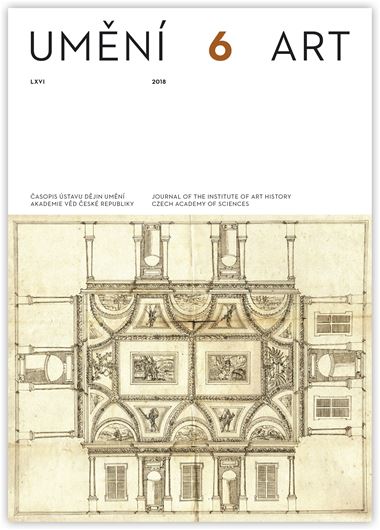Petr Uličný
Od císaře k oráči a zase zpět. Panovnické cykly ve Starém královském paláci na Pražském hradě
In the Old Royal Palace in the Middle Ages and early Modern Age cycles of rulers evolved, the idea of which was to confirm the legitimacy of the ruling monarch. Around 1360 Charles IV, after being crowned Emperor in Rome in 1355, had a large cycle of world rulers placed in the Throne Room. Two inscriptions found on the south side designated the panel paintings of Emperors Leo IV and Charles III the Fat. According to this it is possible to determine that the cycle ran clockwise and probably began next to the entrance to the hall on the north side.. The basis for its compilation was probably a list, stored now in the Třeboň archive (A 7). The panels, possibly 104 in all, were of a similar size to the panel paintings in the Holy Cross Chapel at Karlstein Castle and possibly also executed by Master Theodoricus and his workshop. During the construction of the Vladislav Hall the cycle vanished, but a new one was created elsewhere, evidently in 1502 by a painter named Hans, perhaps Hans Elfelder. The cycle was placed in the antechamber of the Royal Apartment in the west wing of the Palace and represented Czech rulers, beginning with Přemysl the Ploughman. It perished following the fire in 1541, but we know of it from the codex created by order of Jan Zajíc of Házmburk (ÖNB, Cod. 8043). In 1548 Paolo della Stella, the architect and sculptor of King Ferdinand I, proposed the renovation of this cycle in the Vladislav Hall, where the cycle was to be bordered by the symbols of the Order of the Golden Fleece. The splendid design, comprising forty rulers and a hundred figures in the vaulting, was not adopted for financial reasons and in its place a greatly reduced cycle was started in 1561, consisting of perhaps only seventeen monarchs on the west façade of the wing of the New Office of the Land Rolls. Because of improper technique, the work was stopped before it was even completed and the paintings were whitewashed over. Subsequent proposals for the interior of the Old Diet were not realised either and so the Palace remained without its cycle of rulers. It was not until the arrival of Rudolf II in the new Castle Palace that there were several cycles, but these comprised emperors only.
Full-text in the Digital Library of the Czech Academy of Sciences:
https://kramerius.lib.cas.cz/uuid/uuid:d62b38aa-07ae-4ff1-a67e-0d672a4dd8ff
< back

